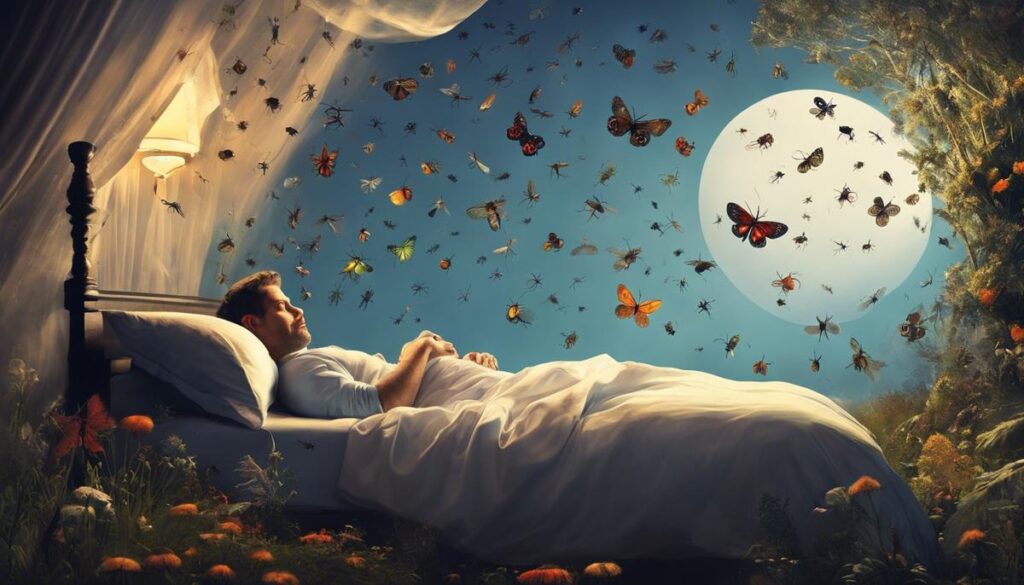Dreams have long served as a window into the inner workings of the human psyche, a realm where our deepest fears, desires, and emotions intertwine in symbolic narratives. Among these nocturnal tales, the presence of bugs crawling through imagined domiciles strikes a particular chord for many. Spanning across the lines of the psychological and the spiritual, dreams about bugs all over the house invite us to confront underlying feelings that may elude our waking consciousness. Our exploration begins within the intricate theories of renowned thinkers like Sigmund Freud and Carl Jung, whose insights into dream analysis unveiled the intricate ways our subconscious mind communicates through symbols. As we venture further, we will unfold the tapestries of history and culture that have woven insects into the fabric of our dream interpretations, and unravel the nuanced significance behind these often-misunderstood creatures.
Psychological Interpretation of Bugs in Dreams
The Psychological Symbolism of Bugs in Dreams
From the perspective of psychological inquiry, dreams are a window into the subconscious—a realm that eludes the grasp of our waking consciousness. Among the myriad symbols that populate this nocturnal landscape, bugs often scuttle and skitter, leaving many to wonder about their significance. Drawing upon the breadth of psychological literature and dream analysis, this article will explore the symbolism of bugs in the realm of dreams.
It is pertinent to begin by acknowledging that the interpretation of dream symbols, including the appearance of bugs, can be inherently subjective, fluctuating vastly across cultural and individual contexts. Nonetheless, prevalent psychological theories offer intriguing insights into common themes associated with these tiny, often misunderstood creatures.
For many, the emergence of bugs in their night-time visions is associated with feelings of discomfort or repulsion—emotions that may reflect underlying anxieties or fears in one’s waking life. In the tradition of Sigmund Freud’s psychoanalytic theory, bugs might symbolize repressed desires or unresolved conflicts, subjects that distress the dreamer much as unwanted pests might. The type of bug appearing in the dream can also be telling; for example, spiders may relate to a perceived entanglement in a complex web of emotions or social relationships.
Conversely, Carl Jung, a Swiss psychiatrist and psychoanalyst who founded analytical psychology, proposed that dream symbols, including bugs, could also represent aspects of the self that are neglected or undervalued, what he termed as the “shadow.” Thus, a swarm of buzzing insects could symbolize neglected ideas or insights bubbling up from the subconscious, urging the dreamer to take notice.
Further, in a cognitive-behavioral sense, recurring dreams featuring bugs may be an indication of persistent worries or stressors. In this framework, the dream itself could be a rehearsal or processing of day-to-day experiences, with the bugs embodying irritants or challenges the dreamer faces in their waking life.
In some traditions, however, bugs may also possess positive connotations. For instance, a dream with a butterfly could symbolize transformation and change, reflecting a transition or growth occurring within the dreamer’s psyche.
It is crucial to understand the multidimensionality of bug symbolism in dreams and to approach such interpretations with flexibility. One must consider personal experiences, emotional reactions, and cultural background when deciphering the cryptic messages of the subconscious. As in all dream analysis, it is the synthesis of these elements through introspection that can reveal the nuanced and often enlightening symbols hidden within the depths of the sleeping mind.
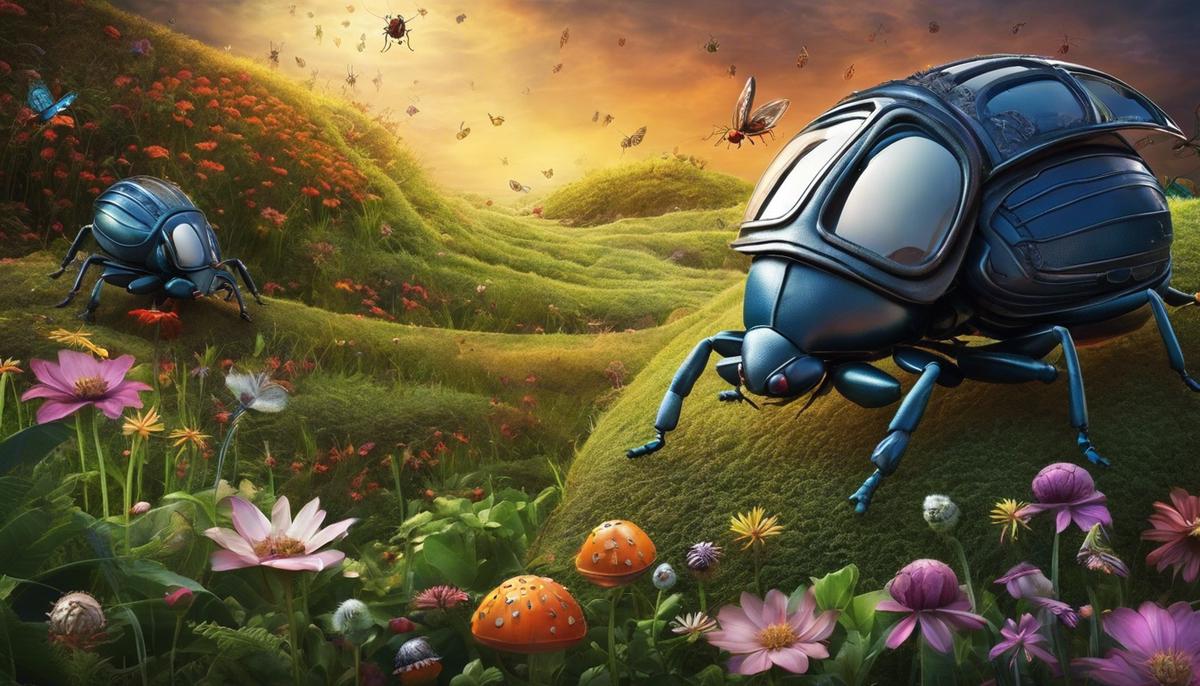
Cultural and Historical Significance of Insects in Dreams
Entomology in Dreamland: A Cross-Cultural Examination
Across the tableau of human history, dreams have served as a ubiquitous element of our collective consciousness, fostering a myriad of interpretations and symbolisms steeped in cultural lore. Intriguingly, the appearance of insects in the theater of our nighttime visions presents a rich tapestry that transcends the mere psychological constructs we might initially surmise.
The lexicon of insect imagery within dreams is as varied as the cultures that contemplate them. In many African traditions, dreams of insects can be seen as ancestral messengers. Illustrious among these are the scarab beetles, venerated in ancient Egypt as emblems of creation and rebirth, a cultural thread interwoven into their dream interpretation lexicon that provides powerful, positive connotations to such visions.
Conversely, in some modern Western societies, where insects are often seen as pests or harbingers of decay, dreaming of these creatures might be indicative of underlying anxieties or fears. It is a testament to the principle that one’s environment and cultural context profoundly shape the very essence of dream symbolism.
Moreover, in agrarian societies, dreams of insects have been remarkably linked with anticipated outcomes of harvests. An appearance of a locust could signal impending scarcity or concern for crops. Within these communities, interpreting such dreams operates almost as an intuitive barometer for the health of their sustenance and livelihood.
Shifting perspective to indigenous Amazonian tribes, where the web of life is dense and intimacy with nature’s minutiae palpable, insects in dreams can assume roles of both protectors and omens. In their cosmovision, a dream of a spider weaving its web might symbolize the intricate patterns of life and societal interdependencies.
Furthermore, in the realm of shamanic traditions prevalent across various continents, dreaming of insects has been hinged upon spiritual transformations or initiations. Insects appear as spirit guides or totems, ushering the dreamer into a deeper understanding of their personal journey or the surrounding natural world.
It is critical to understand that these myriad interpretations are not set in stone; rather, they are fluid, mutable threads in the fabric of collective human experience. As such, to interpret the enigmatic symbols insects represent in our subconscious narratives, an individualistic approach grounded in personal relevance and contemporary context is paramount.
In conclusory reflection, insect symbols in dreams serve as a multi-faceted prism reflecting the human condition’s interplay with nature, psyche, and culture. It is an area in which the field of oneirology—dream study—continues to delve deep and entomology intersects to reveal the profound interconnectedness of our innermost thoughts and the external world. Through understanding these visions, perhaps, we gain not only insight into our deepest selves but also a greater appreciation for the smallest denizens of our planet, who even in dreams, have so much to teach us.
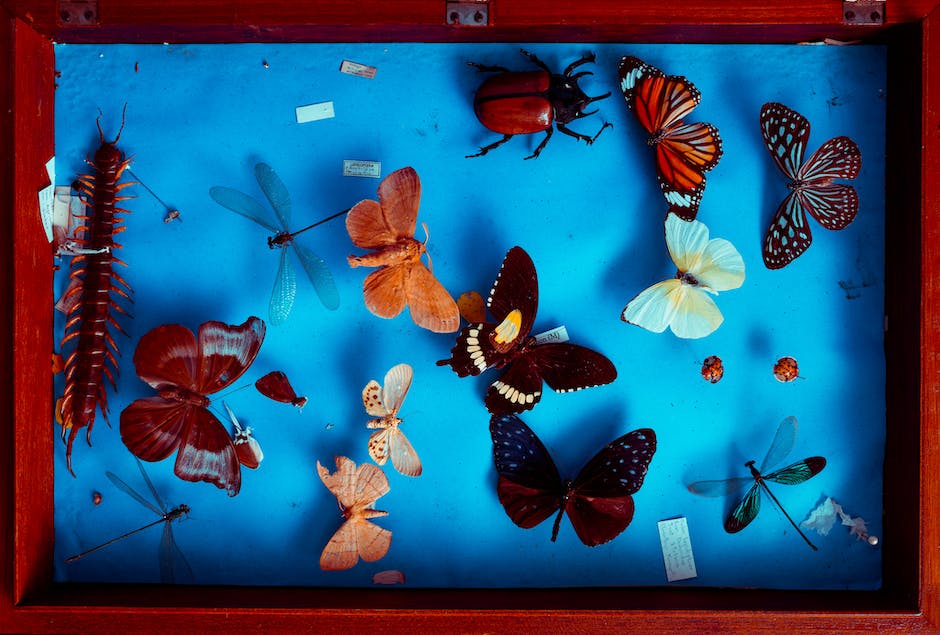
Common Species of Bugs in Dreams and Their Meanings
Within the spectrum of dream interpretation, the appearance of specific insect types augments the analysis beyond broad strokes, effectively bringing into sharper focus the rich tapestry of an individual’s interior world. These interpretations underscore the insects’ diverse roles in ecology, symbolizing complex webs of meaning in our nocturnal musings.
For example, the ubiquitous presence of ants in dreams frequently alludes to notions of industriousness, teamwork, and organization. An African proverb says, “Cross the river in a crowd and the crocodile won’t eat you.” Much like the ant, community and collaboration can emerge as prominent themes. Yet, if one dreams of feeling overwhelmed by ants, this could signify a subconscious grappling with issues related to cohesiveness in one’s life or possibly even a sense of being lost within the ‘colony’ of society.
The formidable bee, an insect allegorical in both its sting and its tireless labor for the hive’s sustenance, might appear to convey a duality of experience. On one hand, there may be an underlying admiration or desire for structured endeavor and the sweet returns of collective success; on the other, an apprehension of pain or sacrifice that such success might necessitate.
Spiders, architects of webs, resonate with themes of creativity and life’s intricate design. Nevertheless, they might also embody entrapment or manipulation in the subconscious arena, prompting reflection on the webs being woven in one’s own life, both by oneself and others.
Dreams of cockroaches may tap into a more primal distaste or disgust, possibly signifying lingering feelings about matters that the dreamer perceives as dirty or repugnant. Contrarily, certain cultures view these hardy insects as symbols of resilience and the ability to thrive under adverse conditions, a perspective that can stimulate self-reflection on personal tenacity.
The ephemeral mayfly, with its astonishingly brief lifespan, emerges in dreams as a potent symbol of life’s transitory nature. In such dreams, reflections on mortality and the urge to seize the moment might be stirred, echoing the mayfly’s dance upon the surface of a stream—a fleeting burst of life in the relentless flow of time.
The dragonfly, with its mastery of air and light, is frequently linked to change and mental clarity. It may signal the subconscious urging one to delve beyond illusions and seek deeper truths, transcending the murky waters of confusion.
Insect symbols in dreams act as emissaries between the conscious and unconscious realms, animating the intersection of oneirology and entomology in the most profound manner. The study of these nocturnal encounters reveals a fascinating confluence where our innermost thoughts and feelings resonate with the lives of these small, often overlooked creatures. Their manifestation in the dreamscape offers a unique lens to view the human condition, a reflection of both timeless archetypes and the idiosyncrasies of the personal psyche.
As we navigate the contemplative exercise of dream interpretation, an appreciation for the natural world becomes inherently linked to the unravelling of our internal narratives. By engaging with these diminutive yet symbolically potent creatures in our subconscious wanderings, we continue to weave the ever-evolving story of our understanding and our existential place within the greater tapestry of life.
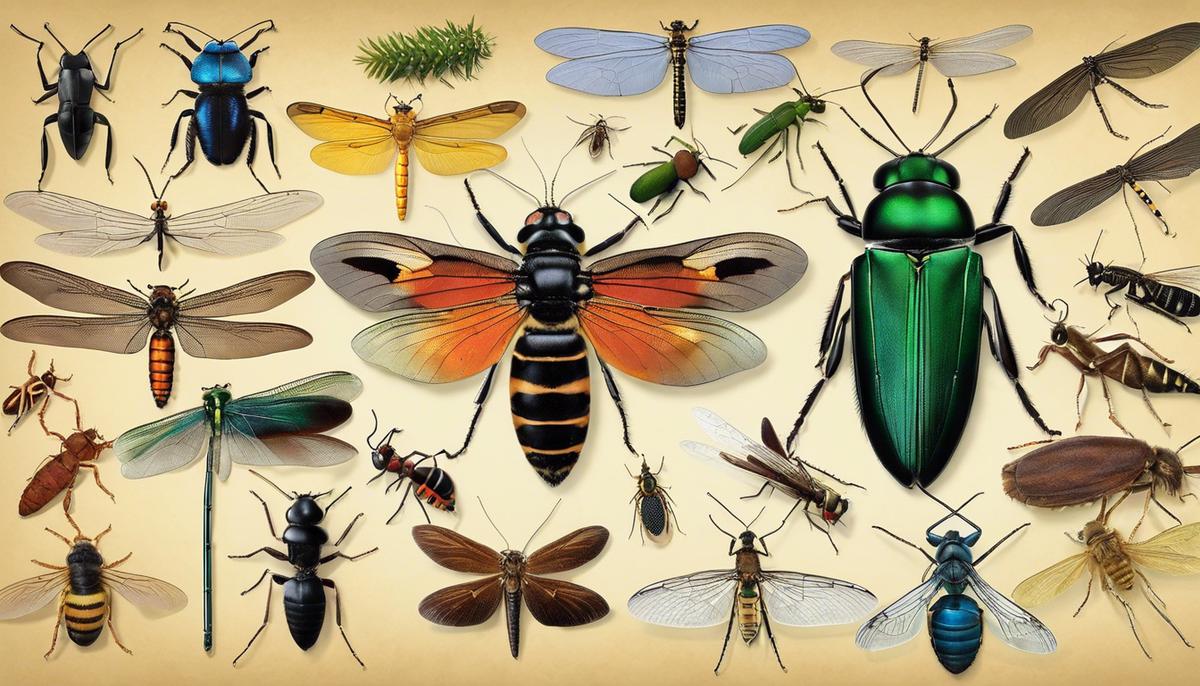
Dream Analysis Methodologies for Understanding Bug Dreams
In evaluating the myriad approaches to analyzing insect-related dreams, one method stands firmly at the forefront: the comparative analysis technique. This method juxtaposes dream content against a vast repository of symbolic meanings culled from a tapestry of cultures and scientific knowledge bases.
When one encounters an insect in a dream, it is not merely the creature itself that should be scrutinized but the context in which it appears. Is the bug solitary or part of a swarm? Does it interact with the dreamer? The situation is as telling as the insect’s role in nature. An isolated bee, for instance, deviates from its eusocial norm and may signify feelings of alienation, whereas a swarm could represent a collective force in the dreamer’s life.
The behavior of the insect within the oneiric vision does much to augment our understanding. A dreaming mind that witnesses an ant colony diligently working may be processing concepts of hierarchy and teamwork. Alternatively, a caterpillar’s metamorphosis into a butterfly might mirror a dreamer’s own transformation or potential growth phases.
Moreover, the inclusion of a dream journaling practice is advantageous, enabling individuals to track recurring themes and fluctuations in their dreams over time. By cataloging and reflecting upon these nocturnal narratives, one can discern patterns and obtain insights into the fluctuating state of their psyche. This introspective endeavor assists in bridging conscious thought with the enigmatic content of the subconscious realm.
To augment personal insights, technological advancements such as digital dream databases and analytical tools can facilitate the interpretation of dreams on a larger scale. These resources allow for the cross-referencing of dream motifs with global interpretations, offering a collective perspective that may inform individual analyses.
Thus, in discerning the messages woven into dreams of an insectile nature, one must integrate personal reflection with a comprehensive understanding of ethology, entomology, and oneirology. By doing so, we illuminate the shadows cast by our subconscious, revealing the intricate interplay of our inner thoughts and the creatures that scuttle and soar through our dreams.
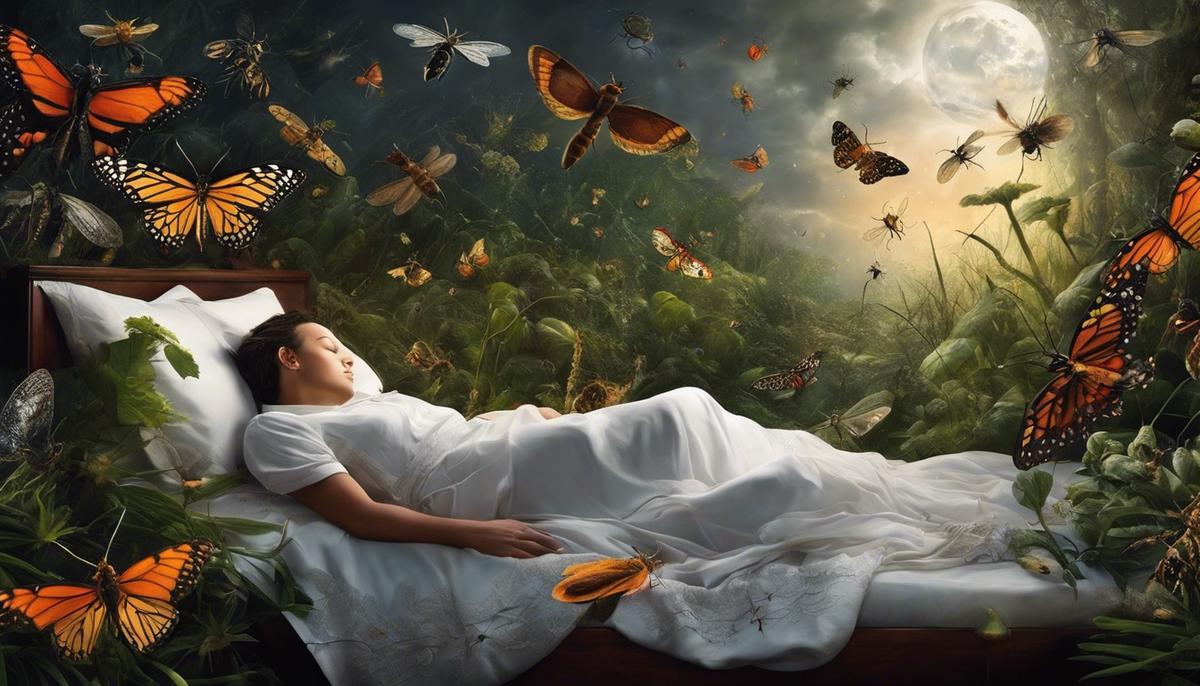
The Impact of Personal Context on Bug Dream Interpretations
The Psychological Landscape of Dream Insects: Contextual Factors Shaping Interpretation
When entering the realm of dreams, the subconscious mind often casts insects into symbolic roles that may vary significantly from person to person. These nocturnal visions of six-legged creatures are not only shaped by cultural and historical contexts but also by an individual’s personal encounters and emotions tied to them. Analysis of bug dreams requires a reflection upon the nature and particulars of each individual’s waking experiences with these arthropods and their symbolisms.
Insects in dreams can hold manifold significations, including concepts of industriousness, survival, and life’s cyclical nature, all of which are tailored by personal relevance. One who cultivates a garden may dream of ladybugs as harbingers of healthy plants, while another individual might associate them with childhood curiosity. Such divergent interpretations underline the subjective application of symbolic frameworks to dream content.
Furthermore, examining an individual’s reaction to insects in dreams can reveal the emotional fabric of their psyche. A dream of bees might summon feelings of community and productivity or induce fear and thoughts of aggression, based on previous exposures and learnings. These emotions then inform the personal symbolism ascribed to the insects featured in the dream landscape.
The representation of insects in their solitary form as opposed to clusters or swarms also yields insights into personal mental states. A single insect may represent feelings of isolation or the need for introspection, while swarms can suggest overwhelming stress or societal pressures. Similarly, understanding the behavior of insects in dreams can aid in uncovering underlying psychological motifs – for instance, a butterfly caught in a web may symbolize feelings of entrapment or the loss of freedom.
Conscientious dream documentation practices, such as maintaining a dream journal, are instrumental in identifying recurrent themes. This longitudinal approach permits the observer to draw connections over time, potentially uncovering deeper meanings and shedding light on subconscious preoccupations.
The fast-growing accessibility of digital dream analysis tools and databases offers an alternative avenue for the examination of insect symbolism in dreams. These platforms allow for a comparative analysis that integrates collective dream data, which can be cross-referenced with individual experiences.
Lastly, a multidisciplinary approach draws upon entomology, oneirology, and psychology, intertwining scientific knowledge of insect behavior and lifecycles with the study of dreams. Such an integration lays the groundwork for a more nuanced understanding of how our internal landscapes and the natural world converse through the metaphor of insects.
In conclusion, the interpretation of bugs in dreams goes beyond mere speculation. It is an involved process, employing a tapestry of personal and collective insights that nourish our comprehension of the private theatre of the subconscious. The subtle dance between the tangible experiences of the waking world and the ethereal scenarios of dreams continues to challenge and enchant those dedicated to the pursuit of understanding the myriad ways the human mind constructs and navigates its nocturnal narratives.
Engagement with the symbolism of bug dreams serves not just as a conduit for self-exploration but also emphasizes the inexorable link each individual has with the broader natural ecosystem. Through these surreal encounters, we often find ourselves reflecting on our own existence and our place within the complex web of life.

Photo by jannerboy62 on Unsplash
The intricate dance of interpretation has led us through a labyrinth of symbols, emotions, and personal reflections, revealing that dreams about bugs are as multilayered as the dreamers themselves. With each species of insect bearing its unique message and each methodology providing its distinct lens, we gain a richer understanding of the connections between our inner landscapes and the natural world. However, the true resonance of these dreams lies in the subjective experiences of the individual, anchored by the web of personal circumstances and emotional undertones that define our existence. It is within this personal context that the symbols of our dreams find their truest meaning, illuminating the nooks and crannies of our minds where reality and the subconscious merge. Unlocking these visions offers not just a glimpse, but a profound journey into self-awareness and growth, a path illuminated by the iridescent wings of our most private thoughts.

